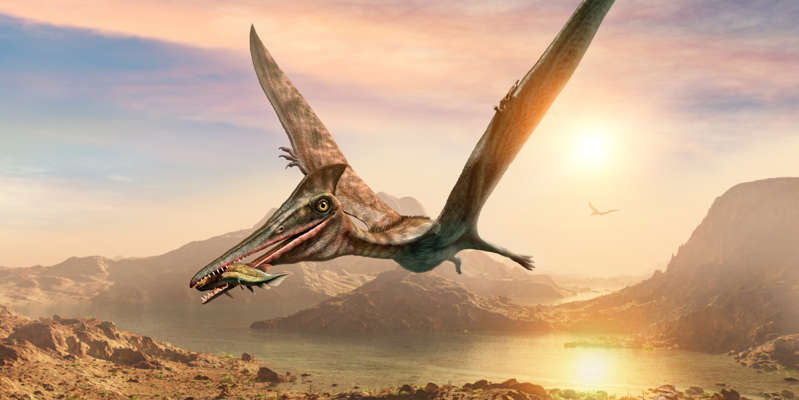
Longer than that of a giraffe: the neck of pterosaurs was called a “miracle of biology”
Scientists from the University of Portsmouth in the UK have conducted a study on pterosaurs: the largest living creatures that have ever taken to the air. They first appeared in the fossil record about 225 million years ago, and disappeared 66 million years ago, according to iScience.
The size of the wings of pterosaurs could reach 12 meters. Another distinctive feature of them is also known – an extremely long neck. It was even longer than that of modern giraffes.
As part of the new study, experts were able to better understand the body structure of these unusual creatures. They found that their thin cervical vertebrae did not break due to a complex internal structure that has no analogues in living species.
“One of our most important discoveries is the positioning of the transverse struts in the center of the spine,” said research contributor Dave Martill.
Scientists found that the neural tube was located in the center of the vertebra and was connected to the outer wall through a series of thin rod-shaped trabeculae (plates that form the skeleton of the organ). Trabeculae ran radially, like the spokes of a wheel, and spirally along the entire length of the vertebra and even crossed with each other.
Previously, paleontologists could not understand why pterosaurs did not break their necks. They had thin, hollow bones like birds. But such bones could not withstand their own weight of flying reptiles and large prey, which they grabbed with their beak.
Computed tomography helped to reveal this secret. Scientists placed the vertebrae of a pterosaur from Morocco into a tomograph and found that their internal structure was perfectly preserved.
The trabeculae they noticed significantly increased bone strength. The experiment showed that only 50 such structures increased the amount of weight that the pterosaur necks could withstand by 90%.
Interestingly, pterosaurs are sometimes called an “evolutionary dead end.” They became completely extinct and, as far as paleontologists know, left no descendants among the modern species. But the new finds showcase the “fantastically complex and sophisticated” details of their bodies.
“Their bones and skeletons were a miracle of biology – extremely lightweight, but strong and durable,” – noted the authors of the scientific work.
Previously, paleontologists have identified the early ancestors of pterosaurs. They were devoid of wings, but they moved nimbly and had a wonderful sense of balance.

